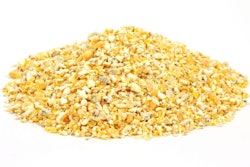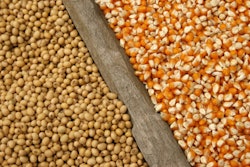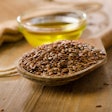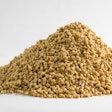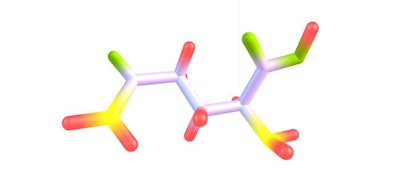
Find out what feed ingredients are rich in this amino acid
Without question, glutamine is one of the amino acids absolutely essential for body protein synthesis. However, under normal conditions, animals can synthesize glutamine using precursor compounds, namely other amino acids (nitrogen donors) and glucose found in excess in their feed. This may be a problem with very low-protein feeds, as soybean meal contributes greatly to the dietary glutamine balance.
Here, it merits notice that dietary glutamine remains the most important energy source for the epithelial cells of the gastrointestinal tract. Under this understanding, glutamine may become semi-essential for young, stressed or diseased animals that experience low feed intake, and thus low intake of dietary glutamine, rapidly deteriorating gut health due to the stress factors unassociated with pathogenic causes, and loss of gut epithelium health from pathogenic causes. It may be assumed that under such circumstances, current feed formulas may not provide enough glutamine to such animals.
Looking at well-founded research, we see in the graph below that up to 1.5% supplementary glutamine enhanced gastrointestinal health (Hernandez et al., 2000) in weaned piglets. In most such cases, improved gut health has been associated with increased feed intake and improved growth performance post-weaning (Yi et al., 2005). Thus, extra glutamine might be needed during such periods when internal production of this this amino acid becomes insufficient.

Added glutamine enhances piglet immunity. (Source: Hernandez et al., 2000)
Based on a real case where we had to formulate a piglet diet rich in glutamine, we realized that few raw materials are rich in this amino acid, although most contain at least even low levels. Among the ingredients already known for their high concentration in glutamine, we identified the following (in no particular order to indicate no particular preference of one over the other):
- Cereals such as wheat, corn, sorghum
- Wheat gluten
- Animal proteins
- Milk proteins
- Soybeans and all legumes
- Yeast
- Fish meal
There is no established glutamine requirement, but there are nutritionists who use an estimated dietary glutamine specification. However, obtaining accurate information regarding glutamine levels in common ingredients remains difficult as far as literature search goes.
Terminology: Glutamine and glutamic acid are two distinct amino acids. Glutamine can be formed by glutamic acid by replacing the side-chain hydroxyl of the latter with an amine group.
In that sense, glutamine is an amide of glutamic acid. Glutamate, often confused with glutamine, is a salt or ester of glutamic acid. Quite often, the combined level of glutamine and glutamic acid are reported as a sum. However, the efficiency of this interconversion may be impaired in animals that require extra glutamine for special occasions.


